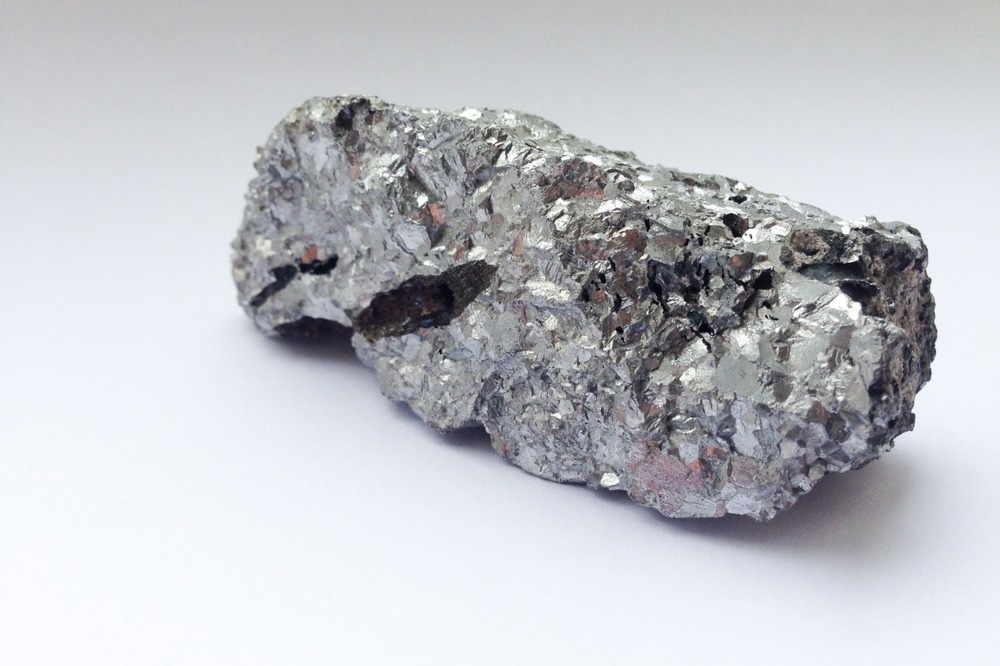A recent article published in Scientific Reports proposed replacing fossil-based reducing agents with bio-based reducing agents to enable ferrochromium production through a potentially CO2-neutral metallurgical process.

Image Credit: Cars and Travels/Shutterstock.com
Background
The metallurgical industry is a major source of anthropogenic greenhouse gas emissions. Generally, elements like chromium, manganese, or nickel are added as ferroalloys into the steelmaking process. These ferroalloys comprise iron and a reducing agent to separate oxygen from the oxidic raw material.
Ferrochromium, a major component of stainless steel, is commonly produced in electrically powered submerged arc furnaces by smelting reduction, preceded by an optional solid-state pre-reduction process. Conventionally, fossil coal and coke are used as reducing agents. However, approximately 0.65 % of the industrial CO2 emissions are attributed to using fossil-reducing agents in metallurgy.
Among various solutions proposed for mitigating such carbon emissions, renewable bio-based reducing agents have emerged as the most suitable option. Bio-based carbon is CO2 neutral as only the mass of bio-based carbon is used, which is also recultivated. Thus, this study investigated pre-reduction and subsequent chromium smelting processes using various bio-based reducing agents.
Methods
The researchers used four different bio-based charcoals (bamboo, coconut shell, corn cob, and olive pomace charcoals) and a fossil lignite coke (for reference) as reducing agents to produce ferrochromium from a chromite concentrate.
Pre-reduction trials were performed using clay crucibles in a furnace at 1300 °C under an argon atmosphere for two and five hours. Smelting was then conducted at 1700 °C ± 50 °C using graphite crucibles in an electric arc furnace.
Before smelting the chromite and reducing agent, a synthetic slag comprising 1000 g of oxides (Al2O3, CaO, MgO, and SiO2) was prepared to achieve a homogenous temperature in the furnace.
Subsequently, 2000 g of the chromite concentrate was charged into the slag with manually crushed reducing agents. Based on the chromite concentrate mass, fixed carbon, lime, and quartz were added as fluxes in the smelting step. Each trial was performed twice.
The study assessed the product quality, process energy requirement, and off-gas generation using bio-based reducing agents. Slag samples were analyzed using X-Ray fluorescence spectroscopy, while carbon and sulfur in the prepared alloy were examined using an element analyzer with a total combustion method.
The chromium-, iron-, silicon-, and phosphorus content in ferrochromium was determined according to International Organization for Standardization (ISO) specifications. Finally, thermochemical simulations were performed using FactSage™ 8.2 software.
Results and Discussion
Using bio-based reducing agents resulted in a ferroalloy with properties comparable to that produced using coke. This is evident from the bulk chemical composition of ferrochromium in terms of chromium, iron, carbon, silicon, and sulfur content. Additionally, the mean chromium metal yield of the trials was between 87.4 % and 97.7 % for both bio-based reducing agents and coke.
However, not all samples prepared from bio-based charcoals met European and American testing standards. Phosphorus content in ferrochromium was also significantly higher using bio-based reducing agents. Such deviations in the selected samples were attributed to process variations like fluctuating raw material compositions.
Specific electric energy consumption (SEC) determines the economic viability of a metallurgical process. This study observed a lower SEC when pre-reducing chromite for the smelting process.
Coke resulted in the lowest energy consumption for raw feed material and material pre-reduced for two hours. However, for trials pre-reduced for five hours, coke only delivered average results, while bamboo and corn charcoal resulted in lower SEC.
Thermochemical modeling helped determine the energy necessary for the pre-reduction process. In the case of raw feed material, coke had the lowest energy demand, followed by corn, bamboo, coconut, and olive charcoal. The same order was observable if the reducing agents were listed by a descending fixed carbon content or an ascending volatile matter and moisture content.
Regarding off-gas generation, using bio-based reducing agents increased off-gas by 12-14 % for bamboo, coconut, and corn charcoal, and 20 % for olive charcoal, which also had the highest volatile matter and moisture content. This high off-gas production could be mitigated slightly using a pre-reduction process.
Conclusion
Bio-based carbon is a viable option to lower the CO2 footprint in ferroalloy production. In terms of the major components of the metal, the ferrochromium produced with bio-based reducing agents was comparable with the reference trials using coke. However, the concentration of detrimental phosphorus was significantly higher in the former case.
The metallurgical process efficiency was comparable when using bio-based reducing agents and coke. However, the energy consumption and off-gas generation were higher when bio-based reducing agents replaced coke.
Thus, the researchers suggest further investigations to overcome the disadvantages of using bio-based carbon in the metallurgical reduction process, such as selecting bio-based reducing agents with low phosphorus content.
Journal Reference
Sommerfeld, M., Botinha, R., Friedrich, B. (2024). Enabling CO2 neutral metallurgy for ferrochromium production using bio-based reducing agents. Scientific Reports. doi.org/10.1038/s41598-024-61700-
Disclaimer: The views expressed here are those of the author expressed in their private capacity and do not necessarily represent the views of AZoM.com Limited T/A AZoNetwork the owner and operator of this website. This disclaimer forms part of the Terms and conditions of use of this website.